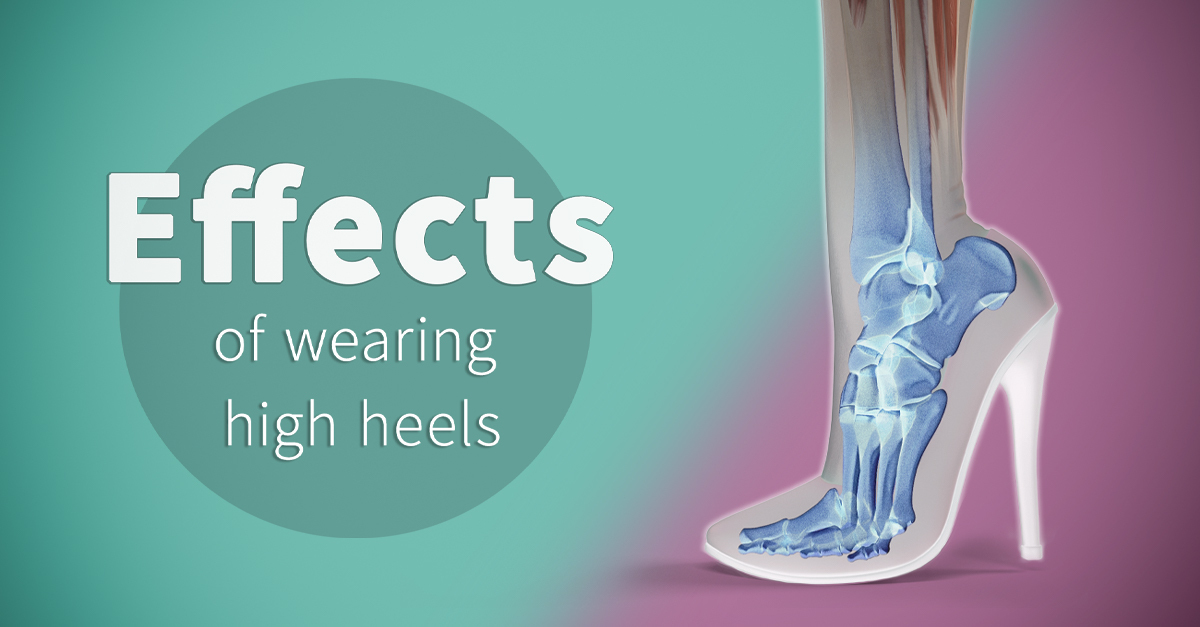
Many of us are familiar with the iconic Barbie high heel and would wear high heels ourselves. But have you ever thought of how your anatomy is affected by wearing high heels?
Many parts of your body are impacted by high heels. Most obviously, your feet are put into an unnatural position. In fact, the higher the heel, the more pressure exerted on the toes and ball of your foot. Pressure on the forefoot can lead to pain or deformities. For instance, the plantar fascia is a thick tissue located along the bottom of your foot. It plays a key role in supporting the foot. Wearing high heels can cause plantar fasciitis, or the inflammation of the plantar fascia. This can cause pain and stiffness of the foot.
Your toes can also be severely affected by high heels. The pressure and weight on your foot in the toe box of the shoe can push your toes together, especially if the shoe is narrow. This can lead to hammertoe, a condition in which your toes are fixed in a bent position. In addition, hallux valgus, more commonly known as bunions, can develop. Bunions are painful bony bumps on the first joint of the big toe. Bunions are caused when your toes are forced into an unnatural position, such as in the narrow toe box of a high heel shoe. Other conditions of the feet and toes that high heels can cause are pinched nerves, corns, calluses and blisters.
Moving up the leg, the muscles of your calf include gastrocnemius and soleus. Gastrocnemius is attached to the calcaneus, or heel, bone of your foot via the calcaneal, or Achilles, tendon. Together, the calf muscles and the Achilles tendon are involved in plantarflexion. Plantarflexion involves pushing the foot downwards and is a key motion in walking, specifically taking off. When wearing high heels, these muscles and tendon become shortened which can make them less effective at plantarflexion. Conditions such as Achilles tendonitis, or inflammation of the Achilles tendon, can occur. Haglund’s deformity is another condition that can develop which involves a bony bump on the calcaneus bone. This is caused by misalignment of the Achilles tendon and can lead to pain, swelling and skin thickening in the area.
Your knees can also be negatively impacted. Osteoarthritis of the knees can develop from the rotation and compression of the knees while in high heels. In addition, your knees are in a flexed position more while walking in high heels. This means your knee muscles need to work more, causing them to become strained and painful quicker.
Your hips are also affected when wearing high heels. Your hip flexor muscles can become shortened and contracted with prolonged use of high heels. This can lead to lower back and hip pain.
Finally, your back can also be strained from the use of high heels. High heels affect your centre of gravity and therefore your stability. To compensate for this new stance, your back becomes more arched. Specifically, the thoracic spine is hyperextended into a curved position. This can ultimately lead to back pain.
Although high heels may be fashionable, there are an assortment of negative impacts on your body that come with them. Keep this in mind next time you put on a pair of high heels! To learn more about the anatomy mentioned, visit the Complete Anatomy app.
